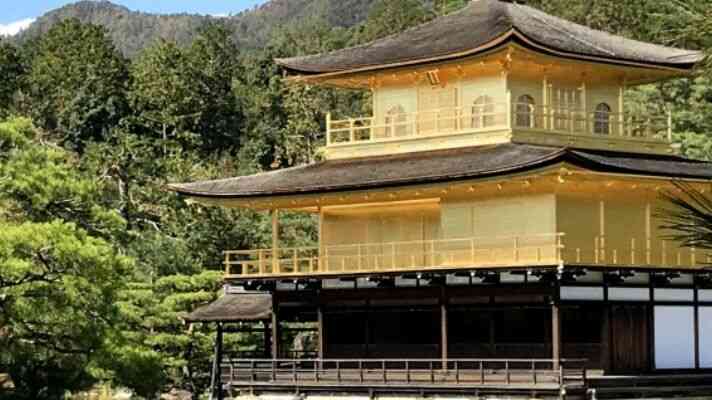The Japanese tea ceremony, also known as “Chanoyu” or “Sado,” is a traditional art that has been practiced for centuries. At its core, the tea ceremony is about much more than just drinking tea. It is a meditative practice that emphasizes harmony, respect, purity, and tranquility. Every aspect of the tea ceremony, from the preparation of the tea to the way it is served, is done with utmost care and attention to detail.
One of the most important aspects of the tea ceremony is the concept of “Shiki-shi Chi-soku.” This phrase, which translates to “only four things, seeking quietude,” refers to the minimalist aesthetic that is central to the tea ceremony. In this blog post, we will explore the concept of “Shiki-shi Chi-soku” in greater detail, as well as the “Wakei Seijyaku” and “Rikyu 7 rules” that are essential to the spirit of the tea ceremony.
For more information on the history of the tea ceremony, click History of Tea Ceremony (From Nara to Kamakura Periods)The History of the Tea Ceremony
First of all, looking back at the history of the tea ceremony, it is said that tea came into Japan during the Heian period and that Saicho and Kukai went to China and brought back tea. In the Kamakura period, the founder of the Rinzai sect, Eisai studied abroad in China at that time and introduced matcha to Japan. The usefulness of tea, written in “Tea Curing Record” states that “Tea begins with a curative herbal form” and that tea is good for your body. In the Muromachi period during the days of Yoshimitsu Ashikaga and Yoshimasa Ashikaga, there were gorgeous tea ceremonies with Karamono utensils – tea utensils made in China – while viewing gorgeous hanging scrolls and enjoying Chinese art.

Juko Murata is said to be the person who started the Japanese tea ceremony. Murata incorporated this Zen spirit, creating a simple 4.5 tatami mat room for the tea ceremony. Juko Murata is the originator of the Japanese tea ceremony Wabi-cha. Later on Takeno Jōo further simplified the tea ceremony. A student of Takeno Joo, was the famous Sen no Rikyu. Sen no Rikyu was active from the Warring States period to the Azuchi-Momoyama period. He served Nobunaga and Hideyoshi. He expanded the idea of “wabi” to not only include tea ceremony tools but also to the style of the ceremony itself and its mannerisms. Because of this it is said that Sen no Rikyu is considered to be the person who perfected Wabi-cha.
For more information on the history of the tea ceremony, click History of Japanese Tea Ceremony.
The Spirit of the Tea Ceremony “Shiki-Shichisoku”
The spirit of the tea ceremony is “Shiki-Shichisoku.” Shiki refers to the spirit “Wakei Seijyaku.” Shichisoku refers to Rikyu 7 rules.
Wakei Seijyaku
Shiki refers to the spirit “Wakei Seijyaku. ”Wakei Seijyaku” is a concept that is deeply rooted in the Japanese tea ceremony, or “chanoyu”.
The four Japanese kanji characters that make up the phrase “Wa-Kei-Sei-Jyaku” (和敬清寂) are central to the philosophy of the tea ceremony and to Japanese culture as a whole.
The first character, “Wa” (和), refers to harmony, peace, and unity. In the context of the tea ceremony, it means opening up to each other, getting along with each other, and working together towards a common goal. It represents the idea of putting others before oneself and creating a sense of community.
The second character, “Kei” (敬), means respect or reverence. It signifies showing respect towards others, especially those who are older or more experienced. In the tea ceremony, it means respecting the utensils used, the surroundings, and the other guests.
The third character, “Sei” (清), means purity or cleanliness. It represents the importance of purifying oneself and one’s surroundings, both physically and spiritually. In the tea ceremony, it means keeping the tea room clean and free from distractions, and also purifying one’s mind and heart.
The fourth and final character, “Jyaku” (寂), means tranquility or calmness. It signifies maintaining a calm and peaceful spirit, even in the face of challenges or difficulties. In the tea ceremony, it means staying focused and composed throughout the ceremony, and not allowing external distractions to disrupt the sense of harmony and tranquility.
Together, these four principles form the foundation of the Japanese tea ceremony and are also fundamental to Japanese culture more broadly. They represent the ideals of respect, harmony, purity, and tranquility, and emphasize the importance of mindfulness, self-awareness, and living in the present moment. By embodying these principles in their daily lives, individuals can cultivate a sense of inner peace and harmony, and contribute to a more harmonious and peaceful world.
In the context of the tea ceremony, Wakei Seijyaku encompasses the physical space where the ceremony is held, the utensils used, and the behavior and attitude of the host and guests. The aim is to create a sense of harmony and balance between all these elements, so that the atmosphere is one of tranquility and respect.
The concept of Wakei Seijyaku is closely linked to the Zen philosophy, which emphasizes the importance of mindfulness, self-awareness, and living in the present moment. It encourages individuals to focus on the here and now, and to cultivate a sense of inner peace and tranquility.
In the tea ceremony, Wakei Seijyaku is achieved through the careful selection and arrangement of the utensils, the use of natural materials such as bamboo and clay, and the attention to detail in the preparation and serving of the tea. The host and guests also strive to maintain a sense of calmness and tranquility throughout the ceremony, speaking softly and moving slowly and gracefully.
The concept of Wakei Seijyaku is not limited to the tea ceremony, but is also applicable to daily life. It encourages individuals to cultivate a sense of harmony and tranquility in all aspects of life, creating a sense of balance and inner peace. It is a reminder to slow down, appreciate the present moment, and find beauty in simplicity.
Rikyu 7 rules
The “Rikyu 7 rules” are seven fundamental principles that were created by Sen no Rikyu, who is regarded as the father of the tea ceremony. These rules are meant to guide the host in creating a space that is welcoming, respectful, and peaceful.
1.Make a good tea for your guest.
The first rule, “Make a good tea for your guest,” emphasizes the importance of preparing the tea just right for each guest. This requires the host to pay close attention to the preferences of each guest and prepare the tea accordingly. It’s about creating a sense of hospitality and making sure that each guest feels comfortable and welcome.
2. Hot charcoal should be arranged so the water will boil well
The second rule, “Hot charcoal should be arranged so the water will boil well,” emphasizes the importance of properly preparing the charcoal that is used to heat the water for the tea. This is a task that the guests may not see, but it is essential for ensuring that the tea is prepared correctly.
3. Cool in summer, warm in winter
The third rule, “Cool in summer, warm in winter,” encourages the host to be aware of the season and adjust the experience accordingly. For example, in the summer, the host may serve cool-looking sweets and wear a kimono that looks cool to help the guests feel more comfortable.
4. Arrange flowers as they are in a field
The fourth rule, “Arrange flowers as they are in a field,” emphasizes the importance of respecting nature and arranging flowers in a way that is natural and authentic. This is meant to create a sense of harmony and tranquility in the tea room.
5. Do anything with time to spare
The fifth rule, “Do anything with time to spare,” emphasizes the importance of preparing in advance to ensure that everything is ready for the guests. This requires careful planning and attention to detail.
6. Prepare an umbrella even if it isn’t going to rain
The sixth rule, “Prepare an umbrella even if it isn’t going to rain,” encourages the host to be prepared for anything that may happen. This means being calm and ready to handle any unexpected situations that may arise.
7. Respect all guests
The seventh and final rule, “Respect all guests,” emphasizes the importance of treating each guest with respect and ensuring that everyone has an enjoyable time. This requires the host to be attentive to the needs of each guest and to create an atmosphere of harmony and mutual respect.
By following these seven rules, the host can create a space that is welcoming, peaceful, and respectful, allowing guests to enjoy the tea ceremony to the fullest.
Conclusion
In conclusion, the tea ceremony is much more than just drinking tea. It is a spiritual practice that emphasizes simplicity, harmony, and tranquility. By following the principles of “Shiki-shi Chi-soku,” “Wakei Seijyaku,” and the “Rikyu 7 rules,” participants in the tea ceremony can create a space that is both beautiful and serene.
This article was written in reference to Urasenke Chado Textbook.

Click here>>> Urasenke Chado Textbook
Below is the table of contents.
《PART 1 THE SIGNIFICANCE OF CHADO》
・Chapter 1 The Spirit of Chado
・Chapter 2 Chado and Zen
・Chapter 3 Classics Related to Chado
・Chapter 4 Anecdotes Related to Chado
・Chapter 5 Tea and Health
《PART 2 THE HISTORY OF CHADO》
・Chapter 1 The Early History of Tea in Japan
・Chapter 2 The Development of Chado
《PART 3 THE SETTING AND IMPLEMENTS》
・Chapter 1 The Chashitsu―Tea Room
・Chapter 2 The Roji―Garden Path
・Chapter 3 The Implements
《PART 4 THE SIGNIFICANCE OF THE TEMAE》
《PART 5 REFERENCE INFORMATION》
・FLOWERS
・CONFECTIONS
・SENKE JISSHOKU―The Ten Craftsmen for the Sen Families
・LINEAGE OF THE THREE SEN FAMILIES―Urasenke, Omotesenke, Mushakojisenke
・THE STUDY SYSTEM
・CHRONOLOGY OF CHANOYU HISTORY
I recommend Urasenke Chado Textbook to anyone who wants an overview of the Japanese tea ceremony.
Urasenke tea procedure Guidebook 1 Introductory Level is recommended for those who want to learn the basic procedures of the tea ceremony..

Click here>>>Urasenke tea procedure Guidebook 1 Introductory Level
